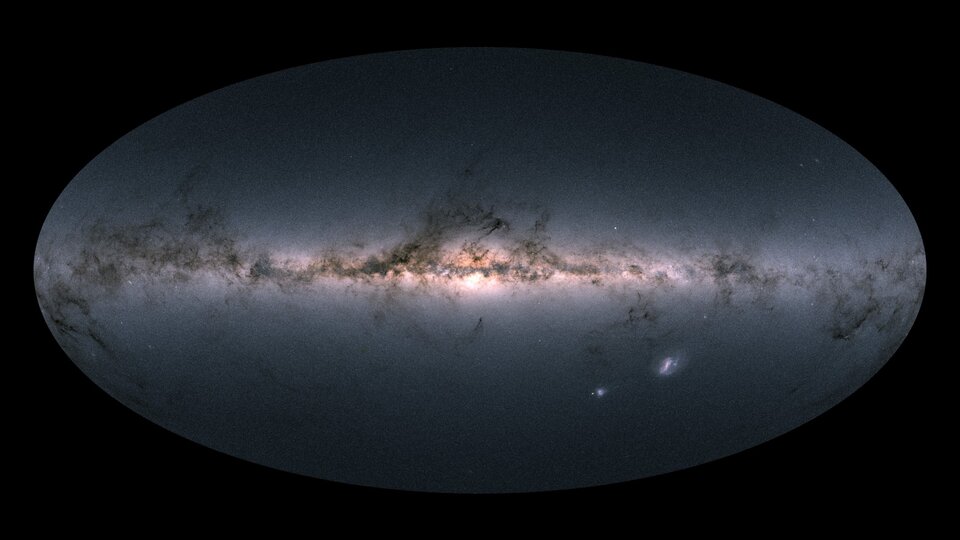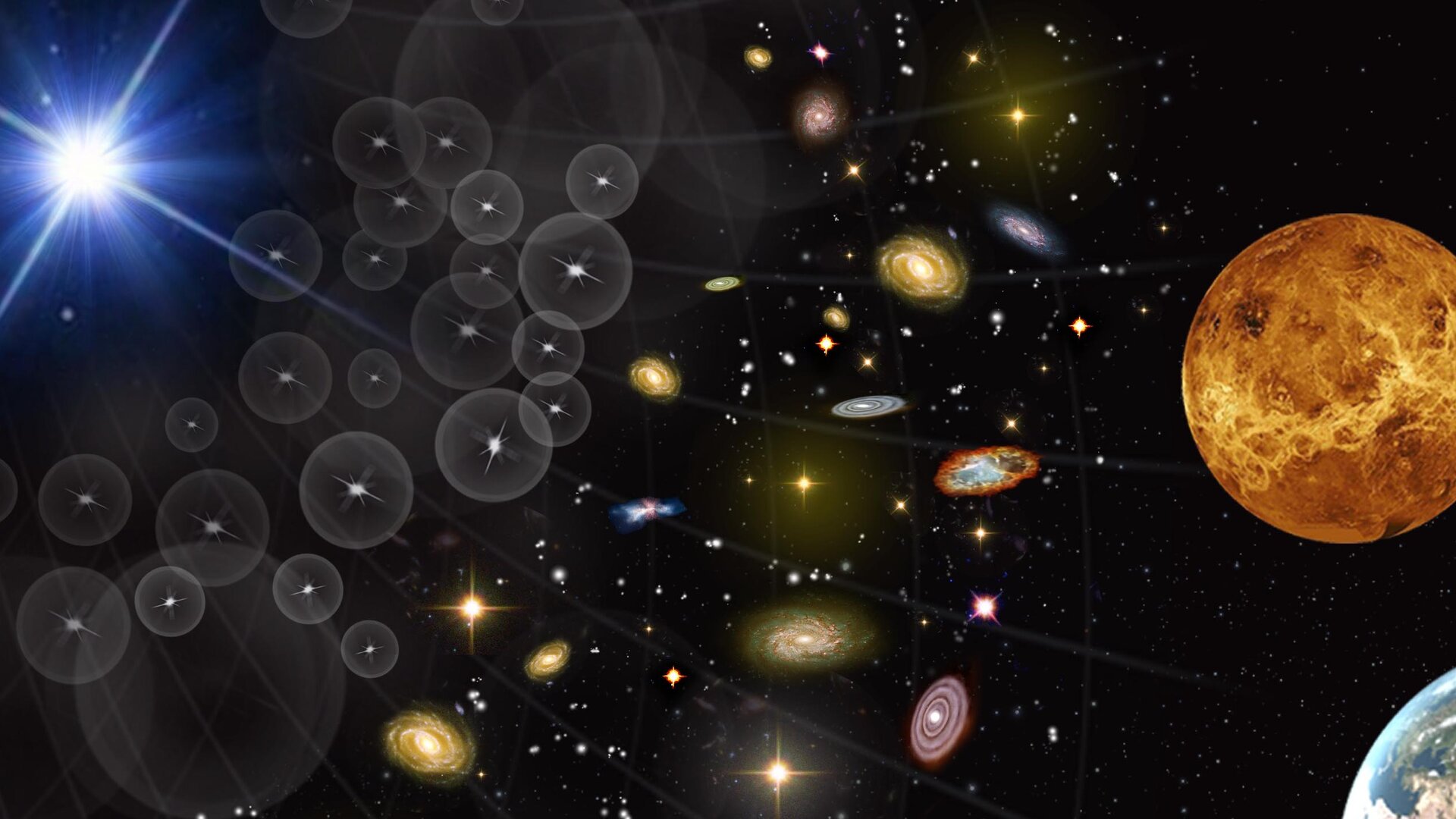ESA's 'Cosmic Vision'
Orbiting and landing on a comet. Mapping the relic radiation from the Big Bang. Sensing liquid water buried on Mars. Charting one billion stars. These are just a handful of recent highlights from ESA’s Science Programme, but these global successes are only possible thanks to decades of long-term planning.
“Cosmic Vision 2015–2025” is the current planning cycle for ESA’s space science missions. It was created in 2005, and is predated by the Horizon 2000 plan prepared in 1984, and Horizon 2000 Plus, which was drawn up in 1994–95. It will be followed by ESA's Voyage 2050, which sets the focus of ESA's large-class science missions in the timeframe 2035–2050.
At the heart of the Cosmic Vision programme are four big questions: What are the conditions for planet formation and the emergence of life? How does the Solar System work? What are the fundamental physical laws of the Universe? How did the Universe originate and what is it made of? To answer these questions, a new fleet of spacecraft were conceived.
The complete list of Cosmic Vision missions is as follows: Juice (L1), NewAthena (L2), LISA (L3), Solar Orbiter (M1), Euclid (M2), Plato (M3), Ariel (M4), Envision (M5), Cheops (S1), Comet Interceptor (F1), Arrakihs (F2) and Smile (collaborative mission with China). (See also the Science Mission Navigator. L = large, M = medium, S = small, and F = fast, referring to the class of the missions.)

Cosmic Vision builds on Horizon 2000
Space missions take years of planning, construction and testing before being launched and spending years – decades in some cases – in operation.
For example, Rosetta and its lander Philae began life in Horizon 2000. The mission was approved in 1993, launched in 2004, and the spacecraft took a decade to reach its destination before becoming the first mission to rendezvous with, fly alongside and land on a comet in arguably one of ESA’s most ambitious space exploration missions to date. Rosetta's operations completed in September 2016, and the science data it collected fuelled scientific discoveries for many years after.
Horizon 2000 also included ‘time-machine’ Planck and astronomy observatory Herschel, both of which changed the way we view our Universe by revealing the relic radiation from the Big Bang, and tracing the birth of stars and the evolution of galaxies through time, respectively. Other Horizon 2000 missions include the still-active X-ray detector XMM-Newton and gamma-ray observatory Integral, which are exploring the most extreme objects in the Universe.
Horizon 2000 Plus includes Gaia, LISA Pathfinder, and BepiColombo. Gaia, the billion-star surveyor, has been making precise measurements of the positions, motions and characteristics of stars in order to create a three-dimensional map of our Milky Way to explore the past and future evolution of the Galaxy. It has already released two phenomenal datasets that are redefining the foundations of astronomy.

LISA Pathfinder successfully demonstrated the technology needed for next-generation LISA – part of the current Cosmic Vision cycle – to detect gravitational waves from space.
Launched in 2018, BepiColombo is on its way to uncover the mysteries of Mercury, the innermost and least-explored rocky planet of our Solar System. The mission is key to unlocking the formation of solar systems – not just our own, but for the vast range of exoplanet systems discovered. Its solar electric propulsion technology follows that of ESA's SMART-1 mission to the Moon, while new technologies developed for BepiColombo are already being used for the ongoing Solar Orbiter mission.
Cosmic Vision 2015–2025


Access the video
Solar Orbiter launched in 2020 to provide unprecedented views of the Sun’s polar regions and to better inform us of processes linked to space weather. The Smile mission is set to launch late 2025, and will investigate how space weather interacts with Earth's protective magnetic bubble.
In 2023, the Jupiter Icy Moons Explorer (Juice) left Earth for the jovian system and assess the habitability potential of the planet’s largest ocean-bearing moons: Europa, Ganymede and Callisto. Joining the planetary science fleet is ESA's next Venus mission, Envision, set for launch in the early 2030s. The three-spacecraft Comet Interceptor mission will set out in 2029 to visit a comet coming directly from the outer reaches of the Sun's realm, carrying material untouched since the dawn of the Solar System.
The programme also includes a series of three exoplanets missions that will keep Europe at the forefront of this growing field, each tackling a unique aspect of exoplanet science. Is Earth really unique or can we find a twin planet? Cheops, the CHaracterizing ExOPlanet Satellite, launched in 2019, and will soon be followed by terrestrial planet hunter Plato (2026) and exoplanet atmosphere investigator Ariel (2029).
Looking deeper into the Universe, Euclid is untangling the mysteries of the cosmic web and how the exotic dark energy and invisible dark matter influence the structure and course of our cosmos.
The next-generation X-ray observatory NewAthena will investigate some the hottest and most powerful sources in the Universe, and together with the future gravitational-wave observatory, LISA, will provide a powerful toolbox for coordinated observations – so called ‘multi-messenger’ astronomy – to enable the study of massive black holes and energetic phenomena throughout the cosmos.
Towards the next fifty years

But what do we want to be studying in 20 or even 50 years from now? We have to start planning now for the missions we want to launch two or more decades from now.
For example, ESA has never been to the distant ice giants Neptune and Uranus. As we discover more and more exoplanets around other stars, we find that many are gas giants in the size range of Neptune and Uranus. Exploring our Solar System and understanding why it is the way it is, is critical to understanding exoplanet systems, too.
Voyage 2050 outlines ESA's science mission themes. ESA’s large-class science missions for the timeframe 2035–2050 will focus on moons of the giant Solar System planets, temperate exoplanets or the galactic ecosystem, and new physical probes of the early Universe.
Choosing a mission
The European space science community has been involved in every important step in the Cosmic Vision plan, from taking part in the selection of themes and proposing candidate missions to assessing preliminary studies of the missions and their proposed instruments. After a mission is selected, Europe’s scientists and engineers build many of the instruments that will fly on the spacecraft. During the operational life of the missions, they are part of the team that plans mission activities and operates the instruments. The final step is for them is to explore the data from the mission and deliver the science results to the world.
This page was last updated in February 2025














 Germany
Germany
 Austria
Austria
 Belgium
Belgium
 Denmark
Denmark
 Spain
Spain
 Estonia
Estonia
 Finland
Finland
 France
France
 Greece
Greece
 Hungary
Hungary
 Ireland
Ireland
 Italy
Italy
 Luxembourg
Luxembourg
 Norway
Norway
 The Netherlands
The Netherlands
 Poland
Poland
 Portugal
Portugal
 Czechia
Czechia
 Romania
Romania
 United Kingdom
United Kingdom
 Slovenia
Slovenia
 Sweden
Sweden
 Switzerland
Switzerland

























